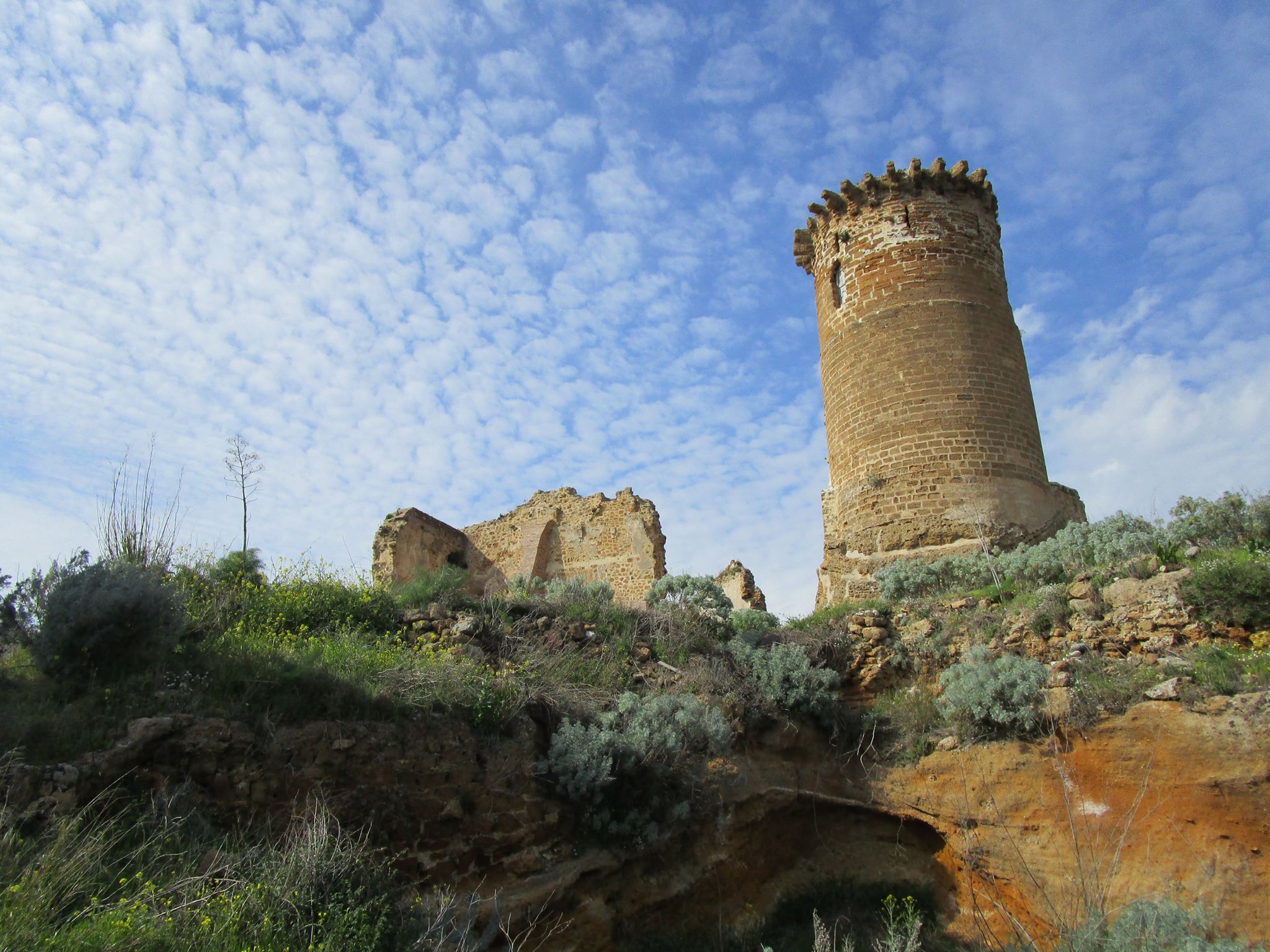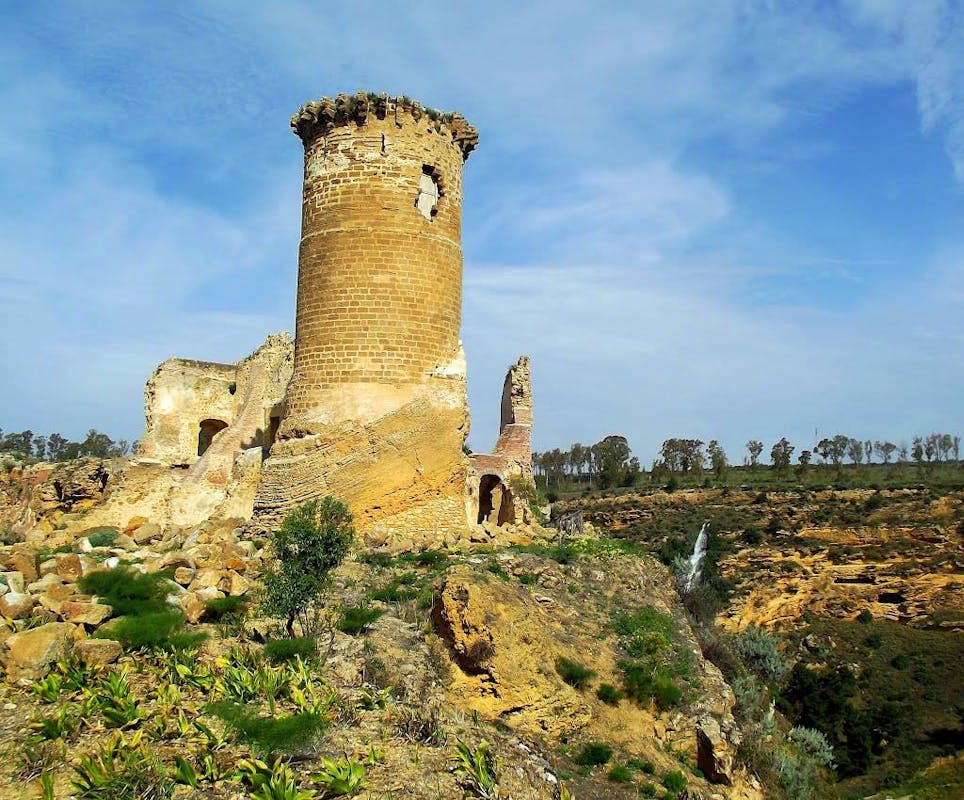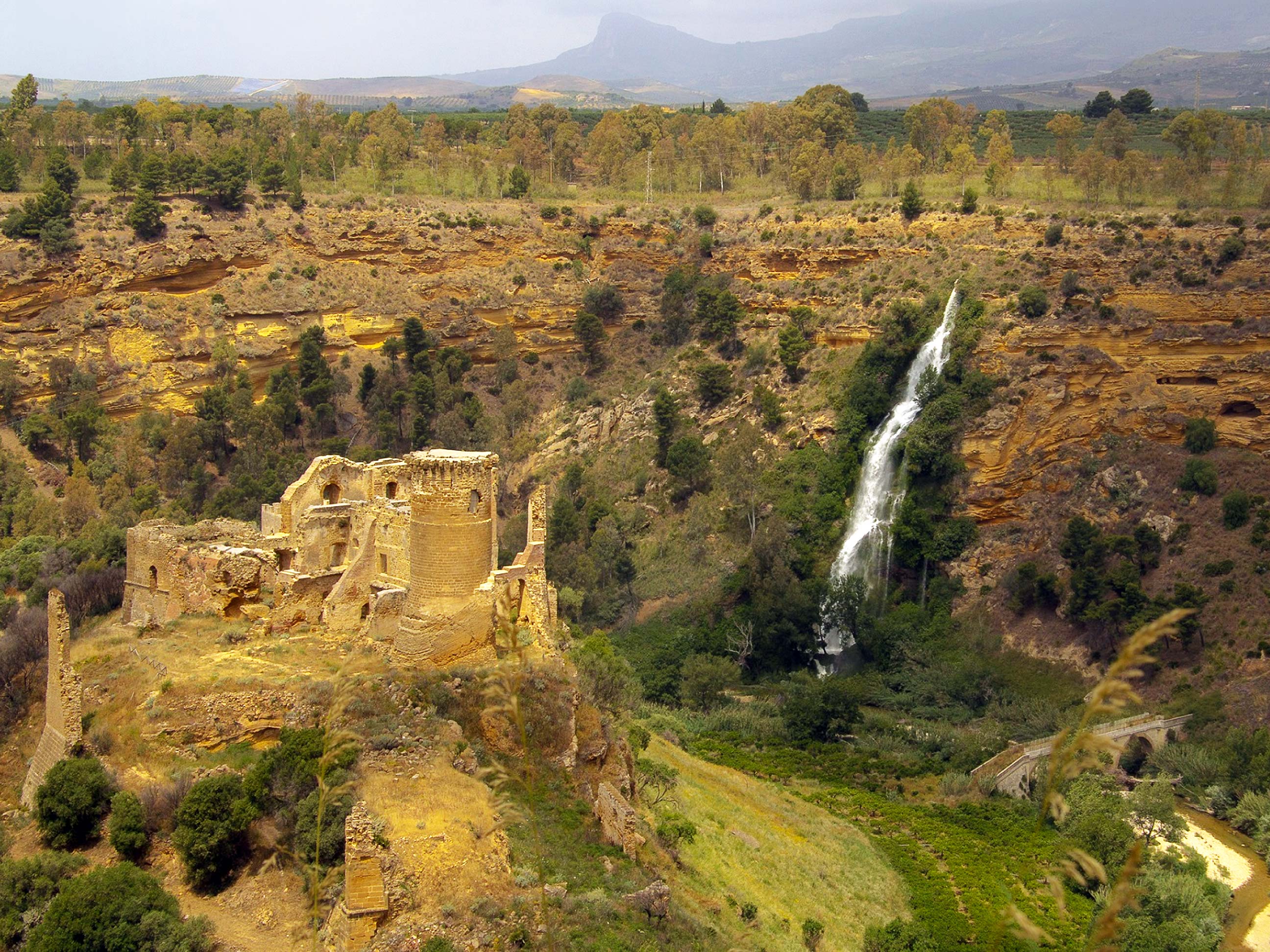


The Castle of Poggio Diana is located on a pleasant hill, three kilometers from Ribera, there are the suggestive ruins of a castle.
Its crenellated tower, high and imposing which reappears stylized on the official coat of arms of the Municipality, becoming the emblem of the city of Ribera.

The Castle is located on a rocky spur overlooking the valley of the Verdura river. Originally indicated with the Saracen name of Misilcassino, that is, place of descent on horseback, the Castle, starting from the sixteenth century, took its current name in honor of the noblewoman Diana Moncada, married in 1511 to Count Gian Vincenzo Luna. The Saracens were the first to build a castle in the 9th century on the left of the Verdura river (Alba-Sosio), a few miles from the sea, which took the name of Misilcassin from the fief of the same name.

Subsequently, the Normans, around the twelfth century, felt the need to build a fortified castle to defend the small neighboring communities and the lands they conquered between the river Platani and Caltabellotta, formerly called Triocala. The people of the countryside gathered at the castle. The fortified structure dominates, from the top of its tower, the steep cliff and the deep valley of the Verdura river. The course of the river near the Castle has a tortuous course and, flowing in a very narrow gorge engraved in the limestone rock, forms three large loops, the last of which laps the hill of Poggio Diana.

How it was built
Lying on this hill, the Castle develops on an irregular plan which, covering an area of ??about three thousand square meters, follows the nature and shape of the land; it is built in cut sandstone, with small rectangular windows of Arab-Norman style, according to all the rules of military architecture of those times, with a drawbridge, a large quadrilongo courtyard, chapel, stable, armory and barracks for the garrison. Part of the perimeter walls, the square corner bastion and the cylindrical tower 25 meters high, crowned by characteristic corbels, remain of the ancient castle.

The cylindrical tower shows inside a ribbed cross vault on an octagonal plan, a type of roof adopted inside the castle towers of the Swabian-Frederick age. The Castle had two entrances, one facing south, the other facing north, which led into a large courtyard. Barred the two entrance doors, no one could access them. The external defense line of the Castle consisted of a high and thick wall, while another wall, consisting of the internal buildings, connected to each other with stable works, closed the fortress. These buildings communicated with each other by means of corridors and embattled terraces. A pointed arch door served as an entrance to a second courtyard. Two brick bridges, of which some ruins are still visible, connected the two banks of the nearby river.

Who it belonged to
Initially the extensive possessions of the Sciacca countryside, including the Castle, were assigned in 1100 by Count Ruggiero Normanno to his daughter Giulietta, and then passed to her children. In 1253 the Castle and the lands of Misilcassino, to which the barony of Magazzolo was aggregated, were granted by King Manfredi, the last of the Swabians, to his relative Matteo Maletta. Frederick II of Aragon, in 1392 granted the Castle to Count Guglielmo Peralta, Lord of Caltabellotta, son of Guglielmo I. Later, it passed to a noble from Sciacca, Artale Luna, who had married Margherita Peralta, heir to the County of Caltabellotta. The investiture of the castle then passed to his son, Antonio de Luna on 10 November 1453, by virtue of the royal privilege granted to him by King Alfonso the Magnanimous.

Diana's favorite castle
On 7 November 1510 Giovan Vincenzo de Luna, married to Diana Moncada, lord of the lands between Caltabellotta and the Verdura and Magazzolo rivers (Isburo), had the investiture of the Misilcassin fief. Count Luna, attracted by the mild climate and the incomparable beauty of the places, annually, in the winter period, descended from his castle in Caltabellotta to that of Misilcassino, which he renamed the "castle of Poggio Diana" in honor of his wife. And Diana Moncada loved it so much that she was really happy to spend a few months of the year there. A place in the Castle, still known as the "piano della Signora", recalls Signora Moncada, beautiful and intelligent as well as courageous.

IIn fact, the lady, when her husband went away to run to the aid of his close or distant friends, did not return to Caltabellotta, but remained in the castle and at night inspected the sentries placed on the walls. "Given the times, there was no personal security against the raids of the Turks and African pirates and two secret passages led directly from the lord of the castle to the open air: the first at the riverbed, the other upstream. [...] One winter's night the silence was broken by the echo of the tolling of the bell: alarm signal. The castle was attacked but Diana Moncada did not run to one of the secret passages, bravely faced the assailants and forced them to retreat with losses "(from Nicolò Inglese, History of Ribera, Agrigento, Vescovile Fathers Vocationists Press, 1966).

Other bibliographic sources: Giovanni Farina, Ribera and its territory, Palermo 1979; Raimondo Lentini, Giuseppe Scaturro, Misilcassim seu Poggiodiana. A castle in Ribera, Ribera 1996.
Poggio Diana Castle
Address: 92016
Phone: 0925561111
Site:
http://www.comune.ribera.ag.it/flex/cm/pages/ServeBLOB.php/L/IT/IDPagina/256Location inserted by
Paolo Zambuto